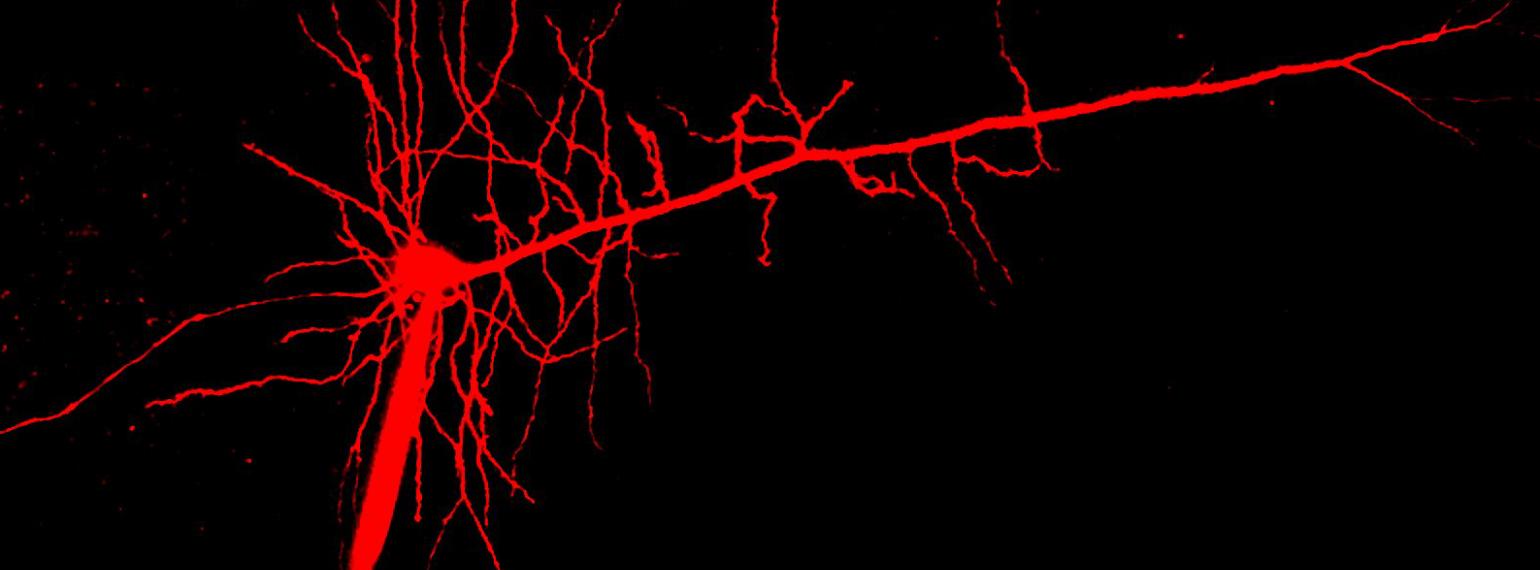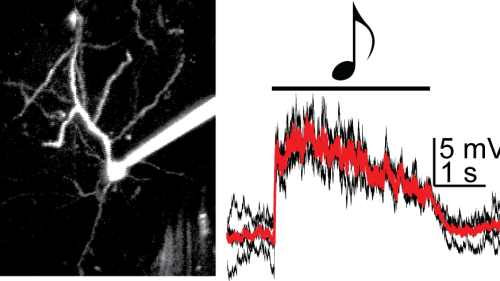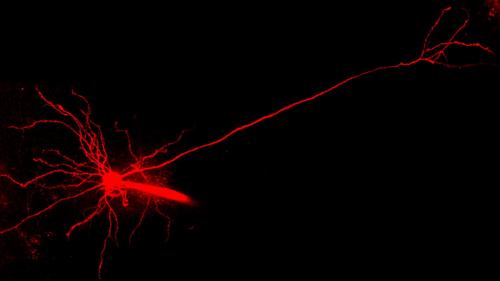From aiding us in safely crossing the street by detecting the sound of oncoming vehicles, to our appreciation of music and our ability to communicate via language, the brain's auditory system rapidly extracts meaning from the sounds that hit our ears. How do brain cells perform these remarkable feats?
This is an important question to answer. Hearing disorders afflict ~12-20% of the population, are associated with depression, and are a major modifiable risk factor for dementia. Given the need for treatments of hearing disorders, a mechanistic understanding of the central auditory system is critical to identify the extent to which new therapies can restore the brain's ability to encode sound.
We study how ion channels and synapses enable neurons of the central auditory system to encode diverse features of sound, and how these mechanisms change in clinically relevant models of hearing disorders such as noise exposure.
To these ends we employ 2-photon imaging in awake mice to understand the sound-evoked dynamics of specific neuron populations in the cortex and midbrain. Combining these approaches with in vivo patch-clamp electrophysiology allows us to mechanistically determine how auditory responses arise from the synaptic inputs individual neurons receive.
In parallel we use brain slice approaches to perform high-resolution circuit mapping and understand how different neurons in the brain communicate with one another, while sub-cellular recordings from dendrites and axons of individual neurons give us unprecedented insight as to the biophysics that underlie neural responses observed in vivo.
Joining the Lab:
Are you interested in these topics? The Apostolides Lab opens Fall 2018 and positions are available.
Post-Docs: You should have a Ph.D. and/or M.D., a passion for scientific discovery, and experience with patch-clamp electrophysiology, 2-photon imaging and/or acoustics + auditory psychophysics. A detail-oriented, quantitative mindset and experience with scientific programming is critical. Please send an email with your CV, a few sentences stating your career goals, and contact info for 3 references to [email protected].
Graduate Students: Rotations will be available 2018/2019. Please get in touch early at the address above. Also please specify what graduate program you are/will be affiliated with.
Undergraduates: Opportunities may be available Summer 2019 for exceptional undergraduates interested in projects at the intersection of digital signal processing, auditory psychophysics, neurophysiology, and mouse behavior. Please get in contact early through the address above.
Selected Publications:
Shields BC*, Kahuno E*, Kim C*, Apostolides PF*, Brown J, Lindo S, Mensh BD, Dudman JT, Lavis LD, Tadross MR. Interrogating behavioral roles of ubiquitous pharmacological targets with cellular specificity. Science (2017)
Apostolides PF, Milstein AD, Grienberger C, Bittner KC, Magee JC. Axonal filtering allows reliable output during dendritic plateau driven complex spiking in CA1 neurons. Neuron (2016)
Apostolides PF, Trussell LO. Control of interneuron firing by subthreshold synaptic potentials in principal cells of the dorsal cochlear nucleus. Neuron (2014)
Apostolides PF, Trussell LO. Regulation of interneuron excitability by gap junction coupling with principal cells. Nature Neuroscience (2013)
Full list here





